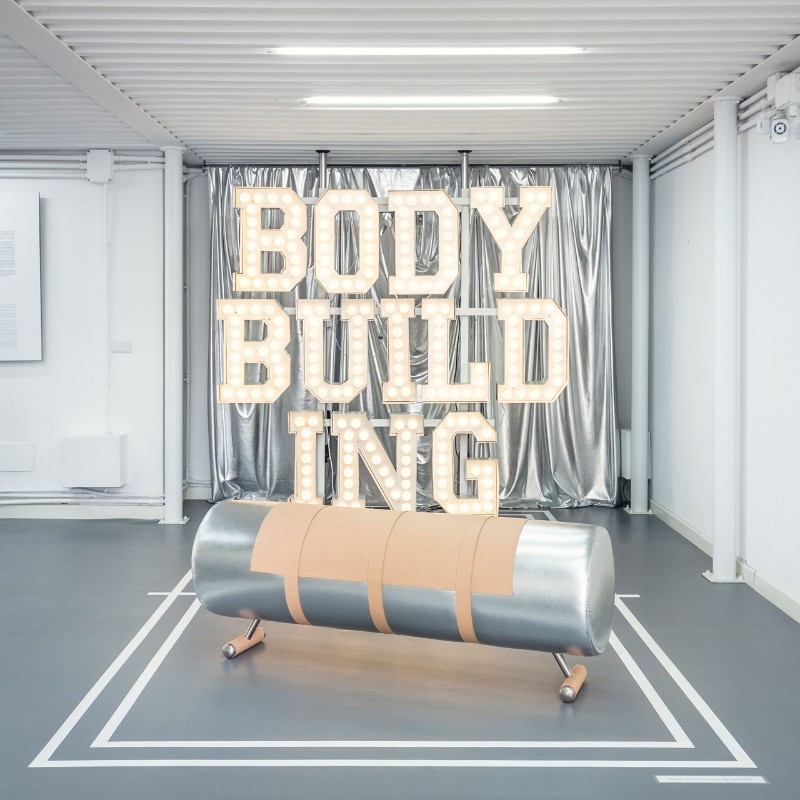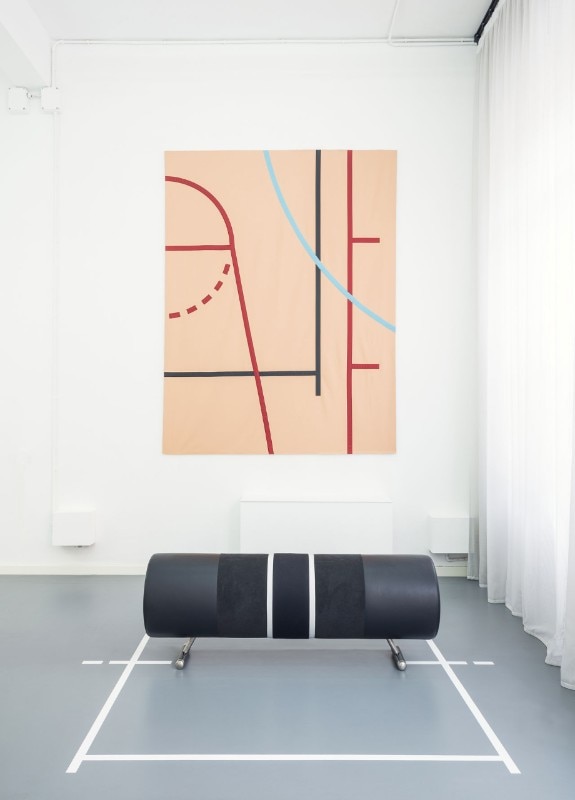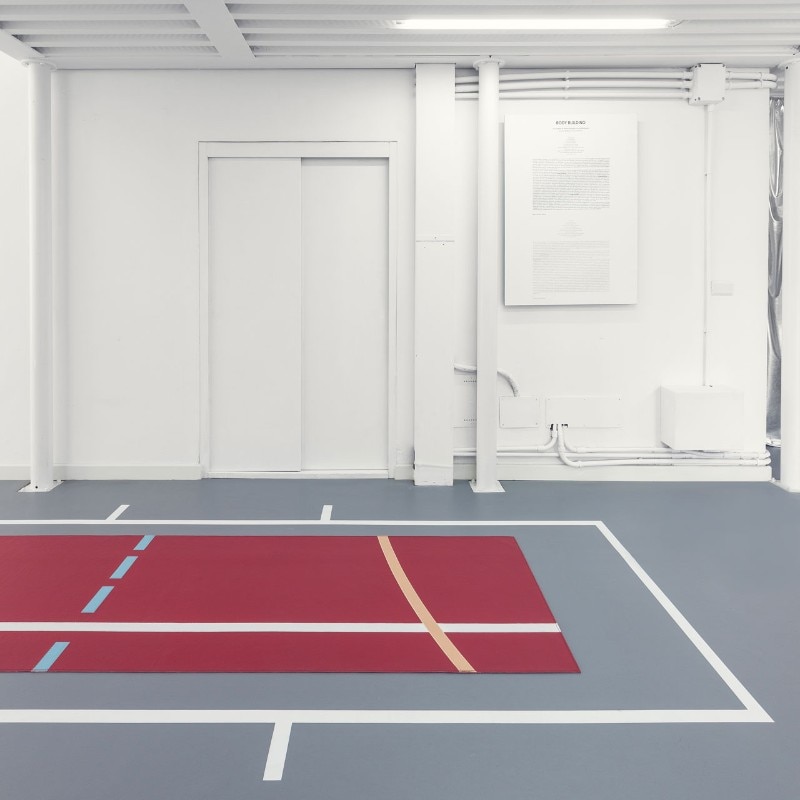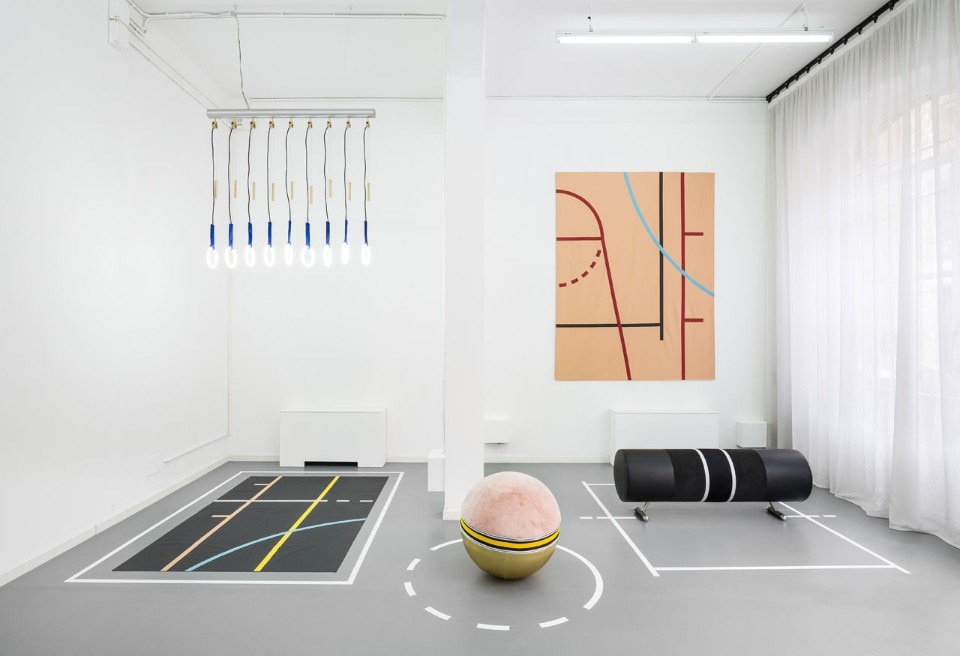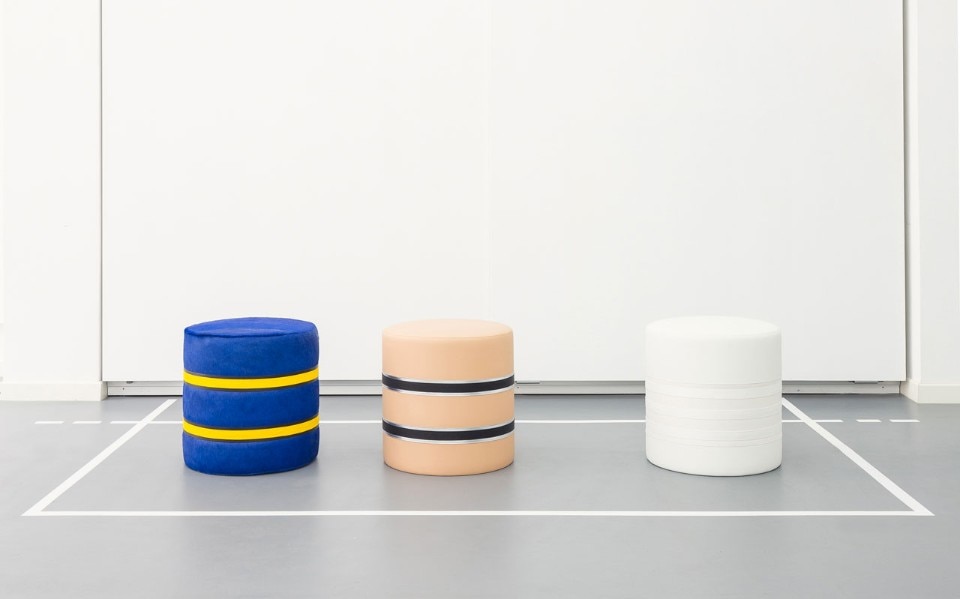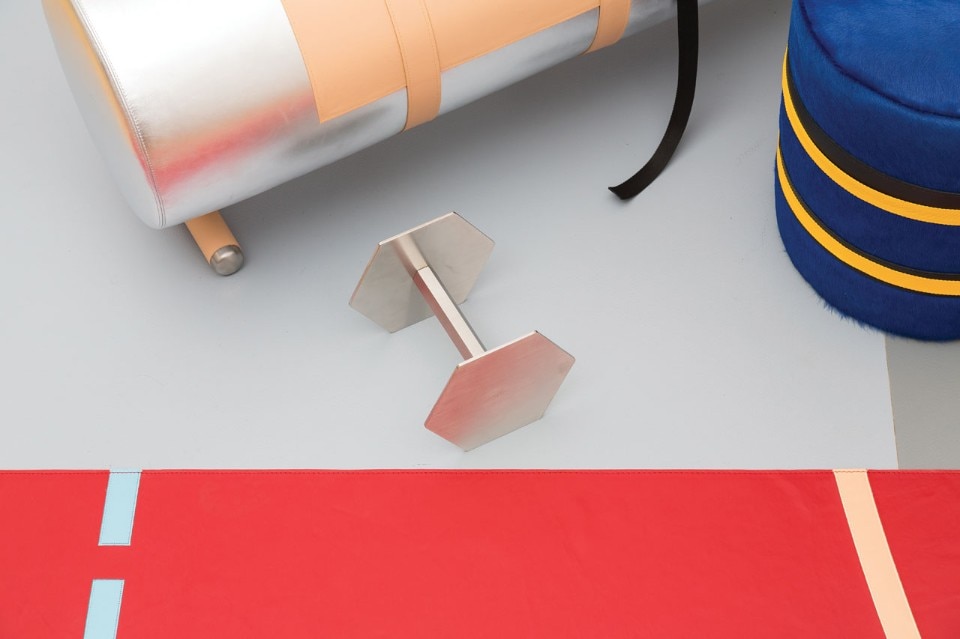The pieces of furniture, designed by Atelier Biagetti and presented at the milanese Design Week, are firmly fixed, becoming almost oxymorons, their static form and structure conceptually opposed to the movement evoked and referenced by the gym equipment.
